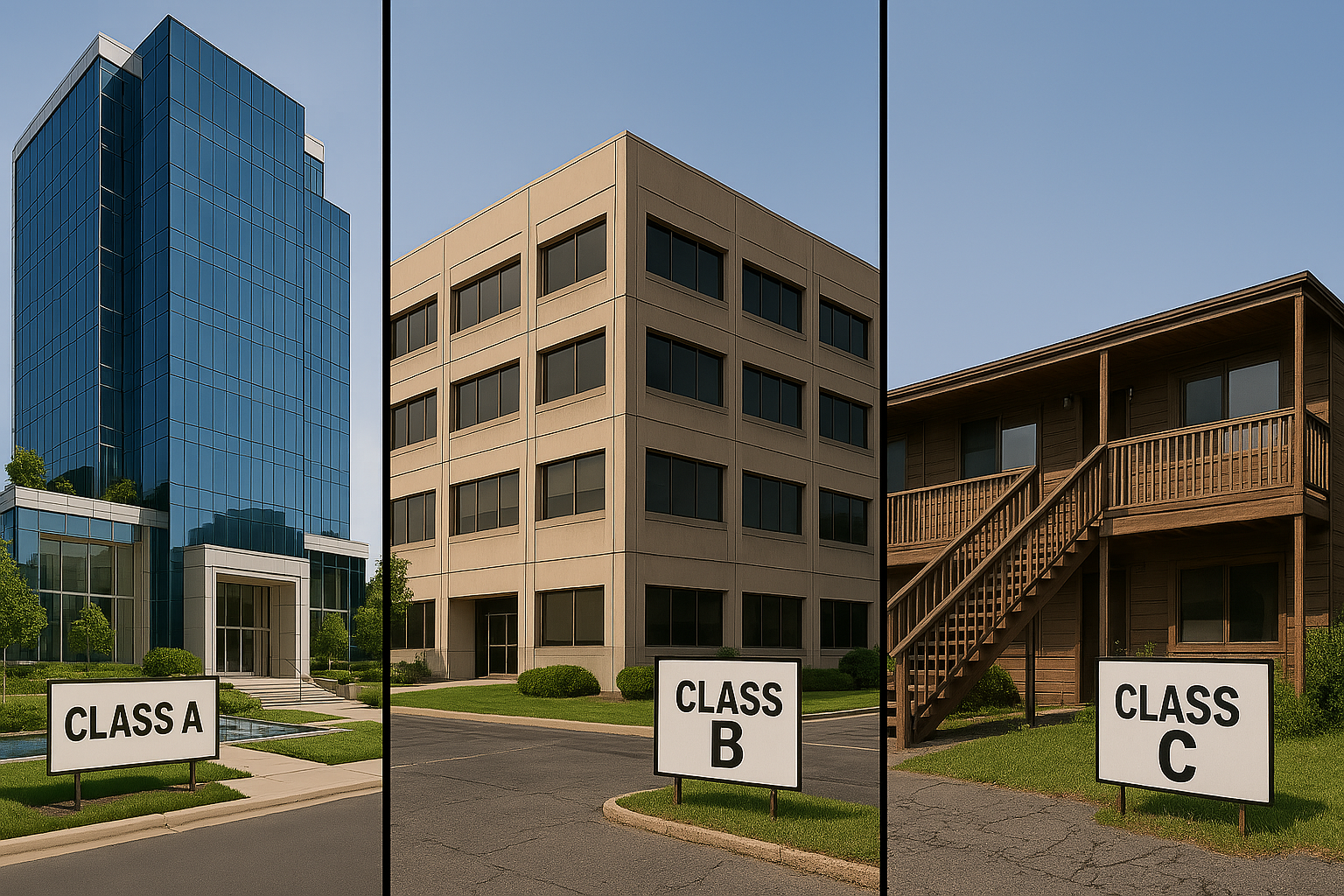
The Diverging Paths of Office Properties: Current Realities and Future Implications
As the commercial office market continues to recalibrate, not all properties are experiencing the shift equally. The ongoing evolution of tenant demands, workplace strategy, and economic pressures has created clear distinctions between Class A, B, and C office assets. Understanding how each class is performing—and what lies ahead—is essential for landlords, investors, and tenants navigating today’s complex real estate environment.
Class A: Beneficiaries of the Flight-to-Quality
Class A buildings—those offering premium amenities, prime locations, and institutional-grade management—are weathering the storm better than any other office asset class. A clear flight-to-quality trend is driving this performance.
Across markets—and especially in Orange County, California—tenants are shedding excess square footage and reinvesting in quality. Approximately 60% of office users are reducing their footprints by 20–40%, using the savings to relocate into higher-tier buildings that better reflect their brand, enhance talent retention, and support long-term flexibility.
In Orange County specifically, there is approximately 30 million square feet of Class A product. However, not all of that space is created equally. Only about half, ~16 million square feet, falls into the premier segment truly benefiting from the flight-to-quality—defined by modern construction, top-tier locations, amenities and best-in-class ownership.
Within this high-performing subset, vacancy is just 15%, or roughly 2.4 million square feet—a figure that can be quickly absorbed under current leasing velocity. With no new construction in the pipeline, this supply constraint is likely to persist for the next 24 months or more, setting the stage for rising rents and tightening availability.
Insight for Tenants: If you’re considering this class of space, a long-term lease commitment today may prove highly strategic. Class A offices are poised to outperform over the next three+ years, driven by both demand fundamentals and limited future supply.
Class B: Overvalued, Under-Renovated, and Facing a Reality Check
Class B properties represent a broad middle tier—functional and well-located in some cases, obsolete in others. However, the current market is forcing a reckoning. Many Class B assets remain overvalued relative to tenant expectations and investor returns, especially when factoring in the high cost of necessary improvements.
In today’s inflationary environment, renovation costs—including labor, materials, and infrastructure upgrades—have increased substantially, limiting a landlord’s ability to reposition buildings competitively. Even after heavy investment, landlords cannot assume the market will reward them with the rents needed to support those capital expenditures. I’ve written at length on this particular topic. You can find them here.
To remain viable, Class B owners must engage in price discovery—the process of determining what tenants are truly willing to pay in today’s market. This often means adjusting asking rents, offering creative concessions, and negotiating aggressively to stabilize occupancy.
Let’s quantify this:
Assume a landlord in Orange County is holding out for $3.00/SF/month full service on a 20,000 SF vacancy. However, market feedback suggests tenants are only willing to pay $2.25 to $2.40/SF, given the abundance of more competitive second-generation Class A spaces.
- At $3.00/SF, the potential gross revenue is:
→ $3.00 × 20,000 SF × 12 = $720,000/year
But with no leasing activity, that’s zero cash flow and increasing carry costs. - At $2.25/SF, revenue becomes:
→ $2.25 × 20,000 SF × 12 = $540,000/year - At $2.40/SF, it’s:
→ $2.40 × 20,000 SF × 12 = $576,000/year
So, the landlord is effectively losing $540,000–$576,000 per year by not accepting what the market will bear—hoping instead for a higher rent that tenants simply won’t pay.
The takeaway: price discovery is not about giving up value—it’s about preserving it through occupancy, stabilized cash flow, and realistic valuation metrics.
Class B tenants often include non-client-facing departments—such as administrative teams, call centers, and processing groups—that prioritize cost containment over prestige. The renovation plan should reflect these preferences. However, even these users are being drawn to repositioned Class A properties offering upgraded infrastructure, flexible space plans, and competitive economics.
Class C: The Existential Question
Class C office buildings—typically the oldest stock, located both inside & outside prime corridors—face increasingly uncertain futures. As leasing momentum slows and operating costs rise, the underlying land value in many cases now exceeds the utility of the structure itself.
This raises an important question for owners and investors: What is the role of Class C office space in the medium to long term?
With little capacity for reinvestment and declining tenant interest, maintaining stable occupancy is becoming harder with each passing year. In this environment, the opportunity cost of holding Class C assets is growing. Owners must critically evaluate whether holding, renovating, or exiting is the most rational financial decision.
Strategic Consideration: For many properties, a sale or conversion to alternative use—residential, mixed-use, or industrial—may be the most effective way to preserve capital and mitigate future losses. The earlier this analysis is conducted; the more options remain available.
The office sector is no longer a rising tide lifting all boats. It’s segmented, stratified, and increasingly shaped by the strategic goals of modern tenants. Class A assets are posed to outperform, while Class B buildings face a necessary reckoning around valuation and leasing strategy. Meanwhile, Class C properties require a deeper look at their long-term viability and alternative potential. For landlords and investors, the time to act is now. Future performance will not be dictated by macro trends alone but by decisions made today—regarding lease strategy, capital deployment, tenant positioning, and the willingness to adapt.
If you own, lease, or are evaluating office space in today’s market, the difference between strategic action and delayed decision-making can significantly impact your long-term outcomes. Contact me directly to discuss how current market dynamics are affecting your property, portfolio, or leasing strategy—and what proactive steps you can take today to position yourself for success.
Did You Find This of Value? Make a Tip:
Bitcoin: bc1qpvm8pyflhvp3laxllsm98kskynas7eclh07dfz









